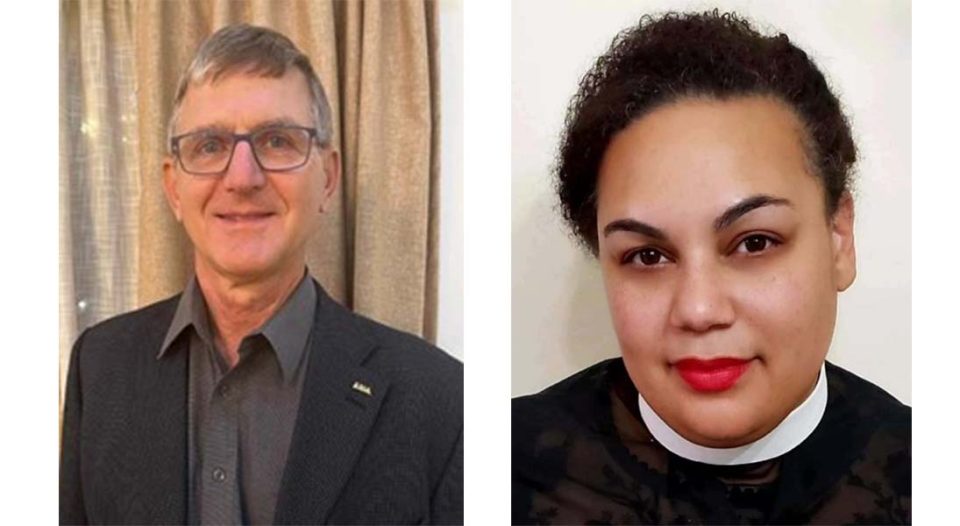When the 2022 Churchwide Assembly voted last summer to form the Commission for a Renewed Lutheran Church (CRLC), which will recommend how to restructure the ELCA’s governing process, it reached back four decades for a name. The original Commission for a New Lutheran Church, which met between 1982 and ’87, was a mammoth research project that held forums across the country, reviewed over 12,000 letters from Lutheran faithful, and processed responses from the synod, district and national conventions of three Lutheran denominations hoping to merge. Its work led directly to the creation of the ELCA, so the branding of this new commission feels nothing less than epochal.
The new group of 35 rostered ministers and laypeople from across the church will conduct a more condensed version of the original group’s investigation, examining “statements of purpose” and “principles of organization” for all three expressions and conducting nationwide research and listening forums. Ten synods sent memorials to the 2022 Churchwide Assembly requesting the commission. “The governing documents, constitutions, bylaws, and continuing resolutions of the ELCA do not allow [congregations, synods and the churchwide organization] to reorganize quickly to meet the changing realities for effective mission in today’s world,” wrote the Northern Texas-Northern Louisiana Synod in language that was echoed by the other nine.
When the next churchwide assembly convenes, in summer 2025, the CRLC will present its findings and recommend whether the church should then mount a special reconstituting convention without delay.
“Church itself has changed. The people coming to church have changed, and the systems necessary to support the work the church is doing have changed”
Appointed in April, the commission met in person for the first time in mid-July, convening for three days at the Lutheran Center in Chicago. Not long after that, its co-chairs, Carla Christopher and Leon Schwartz, sat down for a Zoom meeting with Living Lutheran to discuss the commission’s work. Both expressed excitement at the first gathering of the commission and stressed the urgency of their task.
“Church itself has changed,” said Christopher, assistant to the bishop for justice ministries in the Lower Susquehanna Synod. “The people coming to church have changed, and the systems necessary to support the work the church is doing have changed. The economy around how church functions—everything from volunteer labor and a full-time pastor with one vocation, churches that were culturally monolithic—none of these things are necessarily a given anymore. We want to make sure that churchwide is resourcing the best places where mission is happening and innovation is happening, that synods have the ability to support and address and equip rostered [ministers] for the future, that seminaries have relevant curriculum, and that parishioners have the ability to be active and involved even if they’re not traditional parishioners.”
Asked about the memorials’ language, both chairs supplied stories of a church struggling to react quickly in a century when crisis is becoming the norm. Schwartz—whose varied résumé includes service as a congregational president, as committee chair for the Southeastern Iowa Synod and on the board of trustees for Portico Benefit Services—remembers the trouble Portico encountered as it sought constitutional changes that would allow it to expand membership to include ELCA-related colleges, universities, nursing homes and other social ministry organizations. “When the churchwide assembly meets every three years, and that’s the only chance you have to change the constitution, it’s very cumbersome. Even bylaws or continuing resolutions, they take a lot of time to change anything.”
Christopher cited numerous examples of the church’s command structure breaking down during the COVID-19 lockdowns of 2020-21. The candidacy process for getting rostered ministers assigned to calls, she observed, slowed to a crawl as synods, seminaries and the churchwide organization struggled to communicate. During the church closures, even something as simple as how to count a congregation’s membership and attendance grew murky. When churches began to reopen, Christopher found, a lack of central authority turned the reopening process into a patchwork.
“When you have two different states in a synod, COVID laws and rules are totally different,” she pointed out. “Some congregations were pressing synod offices, ‘You need to tell us if we’re meeting or not this week.’ Other congregations were going ahead and meeting even when they were in areas where it was very unsafe to do so, according to the [Centers for Disease Control and Prevention].” The constitution, she argued, provided no clear authority to decide “the matrix of what makes a church safe.”
“It’s a different environment. You can’t take six years to make changes anymore in this world.”
Neither chair would concede that the decades-old model of three expressions was fundamentally flawed, but they agreed that many exciting new aspects of church ministry are flowering outside that model. “There are many people that would say there’s several other expressions of the church in addition to the three that are listed in the constitution,” Schwartz remarked, “such as all the nonprofits out there doing ministry under the name of the ELCA. There’s camps, colleges and universities—those are separately incorporated ministries, which are in the constitution, but they’re not really part of churchwide either. There’s a lot of things that have just grown up over the past 40 years.”
Christopher seconded his point, explaining that a churchwide directive for more interfaith engagement has further blurred the line between what is and isn’t part of the church. “Where do our National Council of Churches voices fit in?” she asked. “Where do Interfaith Partners for the Chesapeake or different environmental agencies fit in? Lutherans Restoring Creation is a pan-Lutheran agency, so where does that fit in and how do we keep them involved in the conversation?” The commission’s first gathering emphasized this, she reported, with commissioners pointing each other to outside resources and championing new collaborations for ministry.
Now that the commission has concluded its first in-person meeting, it will embark on the listening phase of its work, soliciting public comment on a set of questions still being formulated. Members will convene again online in September and in person before the end of the year. As Schwartz pointed out, the original Commission for a New Lutheran Church took six years to collect its data whereas the new commission is down to about a year and a half before its report comes due. He praised the churchwide organization’s work in assembling the team but lamented that so much time had elapsed already. “It’s a different environment,” he said. “You can’t take six years to make changes anymore in this world.”




